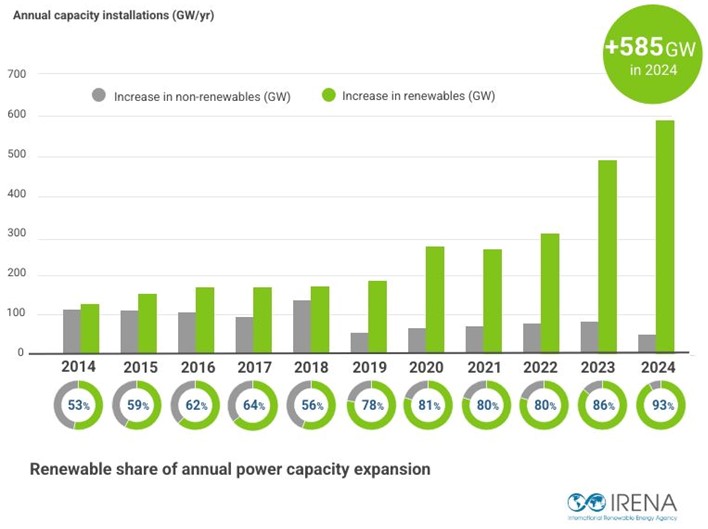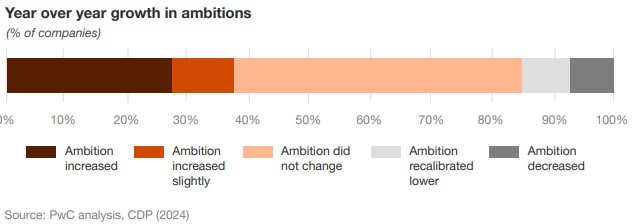Bumper year for renewables, US abandons Standards and oceans trump skies
In this issue:
Renewables taking charge
The IEA’s Global Energy Review 2025 shows energy demand grew by 2.2% in 2024 with electricity demand growing by 4.3%. Renewables accounted for the largest share of total energy growth at 38%, followed by natural gas (28%), coal (15%), oil (11%) and nuclear (8%). China and India saw the largest growth and developing economies accounted for 80% of total growth. Growth in the demand for oil slowed and, for the first time on record, oil’s share of the total energy market fell below 30%.
93% of new generation renewable
Meanwhile, IRENA (International Renewable Energy Agency), in its Renewable Capacity Statistics 2025, reveals 93% of new electricity generation in 2024 was renewable. An additional 585GW of renewable capacity was added in 2024, 15% up on the year before. The total renewable capacity now stands at 4,448GW. Solar was the big winner with 452GW of new generation, 77% of the growth.
Heatpumps need regular monitoring
Obvious to most perhaps, but new research from academics at ETH Zurich has identified concerns about the efficiency of residential heatpumps that are incorrectly set and poorly maintained. A field study of 1,023 in situ heatpumps over two years indicates 17% are not meeting existing, local efficiency standards. The underperformance is mainly attributed to a combination of design flaws, incorrect settings and faults.
US ignores efficiency
Meanwhile, President Trump is abandoning efficiency standards. The US Department of Energy has just removed or scrapped the introduction of efficiency standards on numerous household appliances such as washers, dryers, ceiling fans, dehumidifiers and heatpumps and some commercial appliances such as walk-in freezers and air compressors. The excuse is deregulating markets and delivering choice to consumers, the result will be the less well-off paying much higher operating costs.
Perhaps not as bad as it seems
While media headlines these days are seemingly full of large companies pulling back on their climate ambitions, a new analysis of CPD data from PwC indicates the reality may be less discouraging. It is reporting that while 16% of the 4,000 companies surveyed were relaxing climate targets in 2024, 37% were tightening them, with the other 48% (rounding) maintaining their ambitions.
Oceans show more potential than skies
The energy density of ocean currents could be 2½ times that of wind farms. That’s the conclusion of a team of researchers from Florida Atlantic University, who analysed 30 years of data from 1,250 satellite-tracked buoys, a total of 43 million data points. The conclusion was that strong ocean currents can generate over 2,500 watts of power per square metre of ocean floor, 2½ times higher than what the wind industry would describe as an excellent resource. South Africa and Florida’s East Coast demonstrated these highest densities but high power density (defined as 500-1,000 watts per sq metre) were calculated for 490,000 sq. km of ocean floor.
Did you know …….
California has 50% more EV chargers than petrol nozzles? The state has 178,549 public or shared private chargers, a doubling since 2022. Around 10% are fast chargers. 26,000 chargers have been added in the last six months. It’s estimated there are 120,000 petrol nozzles across the state.


